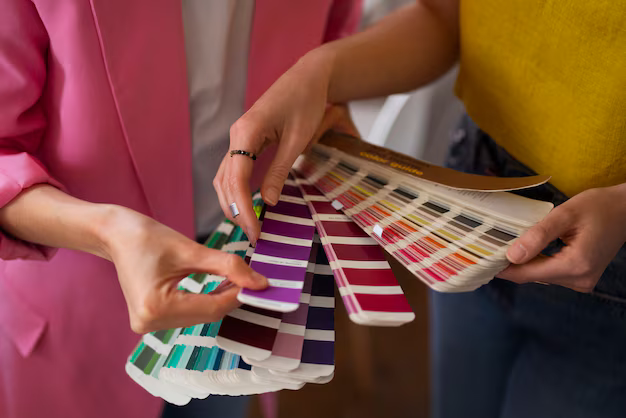Color theory in fashion is a powerful tool, allowing you to create looks that are visually appealing and balanced. Knowing how to mix colors harmoniously can enhance your style and make every outfit even more interesting. Let’s look at the basics of color theory in fashion and learn how to easily apply it to your wardrobe.
Understanding the Color Wheel
The color wheel is a basic tool in color theory. It organizes colors based on their affinity to each other, making it easy to see which colors look good together. The wheel is divided into primary colors (red, blue, yellow), secondary colors (green, orange and purple, which are created by mixing primary colors) and tertiary colors (yellow-green, blue-green, etc.).
In fashion, using the color wheel can help you create cohesive and appealing outfits. Here’s how you can use it for different color systems.
Monochromatic color scheme
This is a great option if you want a cultured, polished look without any overwhelming colors. For example, a head-to-toe blue outfit could include a light blue top, dark blue pants, and navy accessories. Monochromatic outfits look good in efficient settings or minimalist styles. They also tend to be longer, making them a great choice for streamlined shapes.
To create a three-dimensional outfit, use one color as the base and incorporate the other two in small amounts. For example, a purple blouse paired with green shoes and a small orange accessory creates a colorful but cohesive look. This approach is ideal for casual and festive settings.
Analogous Color Scheme
Analogous colors such as blue and green or red and orange. These colors are pleasant and often found in nature, so they are soothing and calming to the eye. In fashion, the analogous scheme creates a flat look with a little more variety than a monochromatic palette.
For example, wearing a mustard yellow top with a burnt orange skirt and a soft brown jacket creates a warm, autumn-like feel. Analogous colors are ideal for daily fashion because they are easy to integrate and give off a relaxed atmosphere.
Complementary Color Scheme
Complementary colors are red and green, blue and orange, or yellow and purple. To use complementary colors virtually, choose one as the dominant color and the other as an accent. For example, if you are wearing a navy dress, add orange accessories such as a bag or shoes. The contrast will add visual interest without making the outfit look boring.
Triadic color scheme
Triadic schemes such as red, blue and yellow, or purple, green and orange. Triadic colors are deep and vibrant, often creating a flat but dynamic face. In fashion, this scheme is perfect for creating a pop of color while maintaining harmony.
To create a triadic outfit, use one color as the base and incorporate the other two in small amounts. For example, a purple blouse paired with green shoes and a small orange accessory creates a colorful but cohesive look. This approach is ideal for casual and festive settings.
Tetradic (Double Complementary) Color Scheme
Tetradic colors such as yellow and purple are combined with blue and orange. This approach can be bold and hard to balance, but it creates an eye-catching, multi-faceted look when done correctly.
To apply this in fashion, keep two colors as the base and use the remaining two as expressions. For example, a purple dress with yellow shoes and subtle blue and orange jewelry creates a rich, multi-layered outfit. Tetradic systems work best for fashion-forward looks and events where you want to stand out.
Neutral Color Schemes and Accents
Neutral colors such as black, white, gray, beige, and brown are cabinet essentials. Although they are not on the color wheel, they work well with almost any scheme. For example, a white blouse pairs easily with bold or pastel colors, acting as a clean canvas.
Consider adding a pop of color to an otherwise neutral outfit. For example, a beige dress can be livened up with a bright red handbag or bold blue shoes. This system allows you to add interest without fully committing to a color scheme.
Guide to Mastering Color in Fashion
Experiment: Try out different varieties to see what you are comfortable with. Start small, such as adding colorful accessories to a neutral outfit, and move from there.
About skin tone: Warm skin tones often look best in warm colors (yellow, red, orange), while cool skin tones shine in blues, greens, and purples. Find shades that complement your skin and enhance your natural features.
Play with patterns: Prints and patterns are a great way to incorporate multiple colors. Choose patterns that reflect your chosen color scheme for a cohesive look.
Final Reflection
Mastering color theory in fashion can be transformative, allowing you to create outfits that feel balanced, expressive, and personal. Whether you’re going monochromatic for a striking look or experimenting with bold complementary colors, understanding these basics will help you liven up your outfits with color. Embrace color theory, and watch your fashion choices become a vibrant part of your style.







